South Miami-Dade County
Self-guided Tour by David L. Lysinger
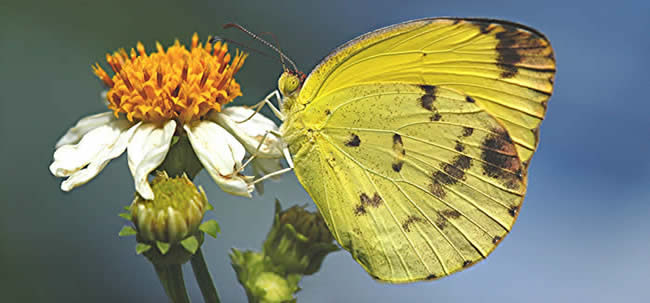
Castellow Hammock Preserve and Nature Center
Butterflyers will long remember the Hairstreak explosions that occasionally occur at this Mecca for great butterflying. During a magical week or two in August 2004, dozens of hairstreaks appeared in the butterfly garden of this facility. In 2010, there was a repeat performance. Hairstreak species variously putting in an appearance on these and other occasions include:
Mallow Scrub-Hairstreak, Strymon columella
Fulvous Hairstreak, Electrostrymon angelia
Gray Hairstreak, Strymon melinus
Red-banded Hairstreak, Calycopis cecrops
Gray Ministreak, Minestrymon azia
Martial Scrub-Hairstreak, Strymon martialis
Amethyst Hairstreak, Chlorostrmon maesites
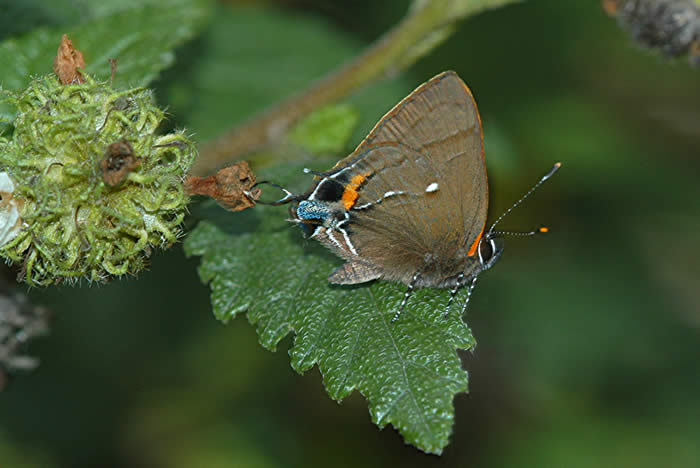
Amethyst Hairstreaks have drawn butterfly enthusiasts from hundreds of miles away and helped give Castellow some much deserved national exposure. [As of 2018, Amethyst Hairstreaks have not been seen here for years; keep looking, though.] A pair of Lyside Sulphurs, Kricogonia lyside, a butterfly which can disappear for years at a time, has also visited the garden.
With a butterfly list hovering around seventy species, it is understandable why Castellow is considered by many to be, acre-for-acre, one of the top butterflying locations in Florida.
Walk the hammock trail and edges (behind the Nature Center) and look for Dina Yellow, Eurema dina, Florida White, Ascia monuste, Malachite, Siproeta stelenes, and Dingy Purplewing, Eunica monica.
In the butterfly garden (in front of the Nature Center) you may see Orange-barred Sulphur, Phoebis philea, Red Admiral, Vanessa atalanta, Ruddy Daggerwing, Marpesia petreus, and Horace’s Duskywing, Erynnis horatius, along with many skipper species, Heliconians, and hairstreaks.
This 112-acre park and preserve contains a mature tropical hardwood hammock and a half-mile self-guided nature trail. It has a covered area with picnic tables and restrooms. If the front gate is locked, visitors are welcome to park outside and walk in.
Castellow Hammock Preserve and Nature Center
22301 SW 162nd Avenue
Miami, Florida 33170-3905
Phone: 305 242-7688
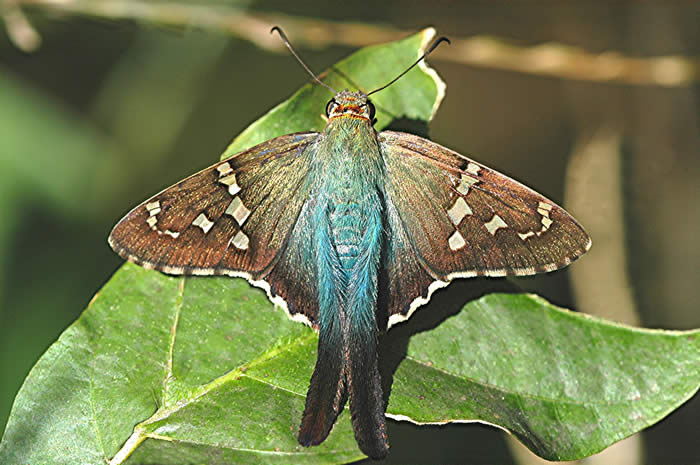
Camp Owaissa Bauer
Camp Owaissa Bauer is an excellent place to look for Dina Yellow, Eurema dina, and Mimosa Yellow, Eurema nisa. These two butterflies are restricted to the extreme southeast mainland; however, the Dina Yellow seems to be extending its range to the north as butterfly gardeners include its host plants, Bitter Bush, Picramnia pentandra, and Mexican Alvaradoa, Alvaradoa amorphoides. The Mimosa Yellow has proven scarce in recent years, but Camp Owaissa Bauer still offers the best chance of a sighting.
This Miami-Dade County Park is a group camping facility. See website for amenities. Call before going to ensure park is open to the public before you visit.
Camp Owaissa Bauer
17001 SW 264th Street
Homestead, FL 33031-1931
Phone: 305-247-6016
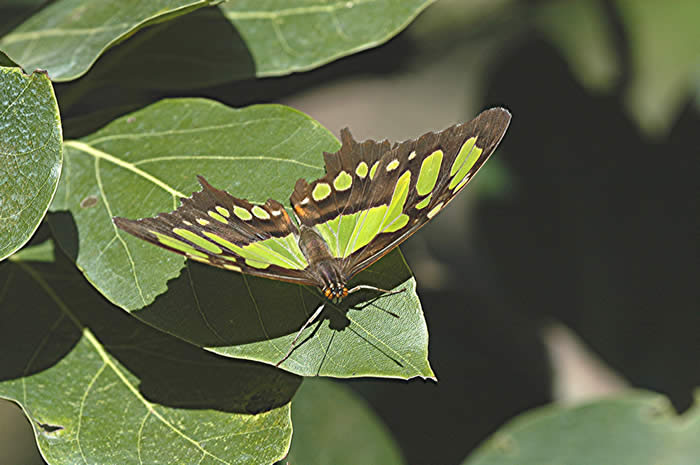
Mary Krome Bird Preserve
Donated by the Krome family in memory of Mary Krome, this park is now owned by Audubon of Florida. This is a good place to look for Malachite, Siproeta stelenes, several Swallowtail species, and several large Sulphur species. Mary Krome Bird Preserve is bordered on two sides by avocado groves with lots of Green Shrimp-Plant, Blechum pyramidatum, the larval plant for Malachite, growing below. This little spot is underused by butterfly watchers, so the butterfly list will improve as more people discover this delightful 2.5 acre preserve, which features an extensive collection of rare South Florida plants.
This preserve is located north of Homestead on the northwest corner of Krome Avenue and Avocado Drive (aka 296th Street). Parking is located via an unfinished road that runs behind the park.
No amenities.
Charles Deering Estate
The Charles Deering Estate is the best of many worlds. It incorporates a marvelous conglomeration of historically significant buildings dating back to 1896; some of South Florida’s most important natural areas; and archeological sites attributed to the Paleo-Indians which have been dated back 10,000 years.
Two of the butterfly rarities found at the Deering Estate are Dingy Purplewing, Eunica monima, and Dina Yellow, Eurema dina, both found in or around the tropical hardwood hammock … the glory of the natural areas found at the “Estate.” With a variety of ecosystems, which also include pine rockland and mangrove forest, you can expect almost any of the South Florida mainland butterflies. Dorantes Longtail, Urbanus dorantes, Long-tailed Skipper, Urbanus proteus, Mangrove Skipper, Polygonus leo, Monk Skipper, Asbolis capucinus, and Hammock Skipper, Phocides pigmalion, lead a list of Skippers that can total around 10 species on a good day.
In June 2006 Schaus’ Swallowtail, Papilio aristodemus, was seen here. In the early 1990s there was an unsuccessful attempt to re-establish this, our only federally endangered butterfly, at the Deering Estate. However, look for the closely related Giant Swallowtail, Papilio cresphontes, as these handsome butterflies patrol the paths and edges.
Watch Deering’s website for advertised butterfly walks which are one of the few ways for the public to gain access to the normally off-limits natural areas of this unique location.
Charles Deering Estate
16701 SW 72nd Avenue
Miami, FL 33157-2500
305 235-1668
Admission Fee
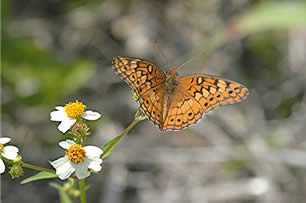
Navy Wells
Located on the main road to Everglades National Park at Southwest 192nd Avenue and 356th Street is Navy Wells Pineland Preserve. This is a good sight to check for the super-rare Bartram’s Hairstreak, Strymon acis. Our endemic Florida Leafwing, Anaea floridalis, was found here on occasion until around 2006; now it is thought to persist only in the pine rocklands of Everglades National Park. The uncommon Tropical Buckeye, Junonia genoveva, and Varigated Fritillary, Euptoieta ciaudia, have been occasionally found here along with most of the to-be-expected species.
No amenities.
